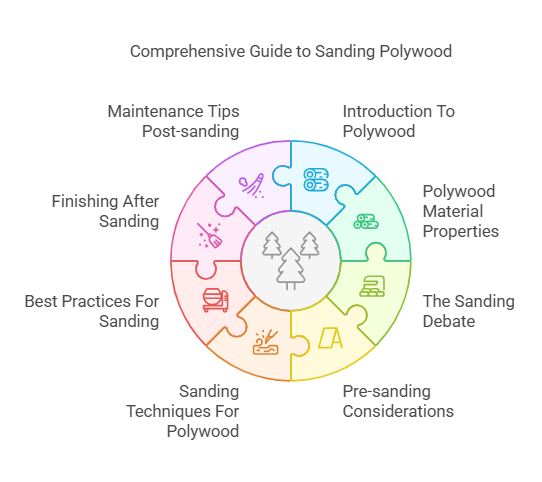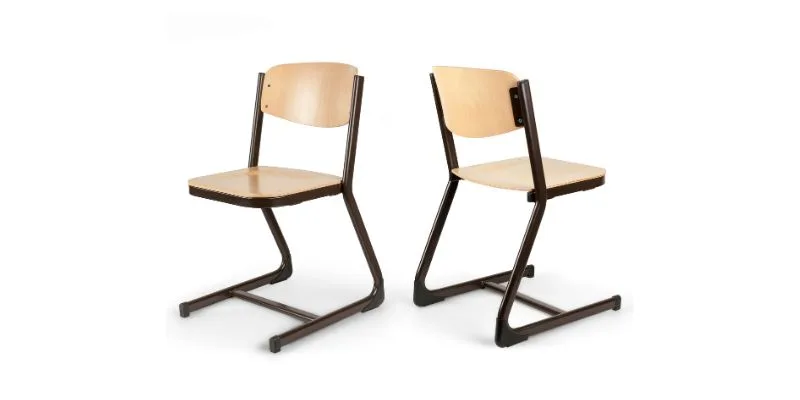Yes, you can sand Polywood. Use fine-grit sandpaper to smooth out rough surfaces without damaging the material.
Polywood, a popular outdoor furniture material, is made from recycled plastics. It mimics the look of real wood while being durable and weather-resistant. Over time, Polywood may develop scratches or rough spots, prompting the need for sanding. Sanding can restore its appearance and enhance its longevity.
This process is straightforward, requiring the right tools and techniques for optimal results. Understanding how to properly sand Polywood helps maintain its aesthetic appeal and functionality. Whether you’re refreshing your furniture or preparing it for refinishing, knowing how to sand Polywood effectively is essential. Dive into the details to ensure your outdoor pieces look their best for years to come.
Introduction To Polywood
Polywood is a durable material made from recycled plastics. It resembles real wood but is much stronger. This makes it ideal for outdoor furniture.
Common uses of Polywood include decking, furniture, and fencing. Many people choose it for its low maintenance and long life. Polywood does not need painting or staining.
It is also resistant to weather and insects. This makes it perfect for areas with extreme conditions. Its vibrant colors stay bright for many years.
Polywood Material Properties
Polywood is known for its impressive durability and resistance to various environmental factors. It can withstand harsh weather, including rain and snow. This material does not warp, crack, or splinter like wood does.
Maintenance of Polywood is simple and easy. Regular cleaning with soap and water keeps it looking new. No need for painting or staining, saving time and money.
| Property | Benefit |
|---|---|
| Durability | Lasts for years without damage |
| Weather Resistance | Holds up in rain, snow, and sun |
| Low Maintenance | Easy to clean; no painting needed |
The Sanding Debate

Sanding Polywood can have benefits and drawbacks. It is not always necessary. Some people choose to sand for a smoother finish. Others prefer the original texture of Polywood.
Pros of sanding include better paint adhesion and a polished look. It can help remove scratches or marks. Cons of sanding involve potential damage to the material. It can also be a time-consuming process.
| Pros | Cons |
|---|---|
| Better paint adhesion | Potential damage to material |
| Polished look | Time-consuming process |
| Removes scratches | May lose original texture |
Pre-sanding Considerations
Before sanding Polywood, it’s important to identify the finish on the surface. Different finishes require different sanding techniques. Check for a smooth surface or any signs of wear. Look for scratches, stains, or fading. These factors will help you decide how to proceed.
Assess the surface condition carefully. If the finish is damaged, light sanding might be needed. For minor scuffs, a gentle approach works best. Deep scratches may need more aggressive sanding to smooth them out. Always start with a fine grit sandpaper to avoid damaging the material.
Sanding Techniques For Polywood
Sanding Polywood can improve its appearance and smoothness. The manual sanding method is effective for small areas. Use fine-grit sandpaper, like 220-grit, for best results. Sand in the direction of the grain to avoid scratches. Apply light pressure and check your progress often.
For larger projects, power sanders save time and effort. Choose a random orbital sander for even results. Start with coarse-grit sandpaper, then move to a finer grit. Keep the sander moving to prevent damage. Always wear a mask to avoid inhaling dust.
Best Practices For Sanding
Choosing the right grit is essential for sanding Polywood. Start with a coarser grit, like 80. This helps remove any rough spots. Follow up with a finer grit, such as 120. This will create a smooth finish.
Always sand with the grain of the material. This prevents scratches and keeps the surface looking nice. Avoid sanding against the grain as it can leave marks. Use a light touch to avoid damaging the surface.
| Grit Size | Purpose |
|---|---|
| 80 | Remove rough areas |
| 120 | Smooth the surface |

Finishing After Sanding
After sanding, it’s important to seal Polywood surfaces properly. This step protects the material from damage. Sealants help to keep the surface looking great. They also enhance durability against weather elements.
There are different options for painting or staining Polywood. Acrylic paints work well and provide vibrant colors. Oil-based stains can also be used for a rich finish. Always ensure the surface is clean and dry before application.
Consider using a primer before painting. This helps the paint stick better and last longer. Choose high-quality products for the best results. Follow the manufacturer’s instructions for application.
Maintenance Tips Post-sanding
Regularly clean your Polywood furniture to keep it looking great. Use a mild soap solution and a soft cloth. Avoid harsh chemicals that can damage the surface.
Rinse with clean water and dry thoroughly. This prevents water spots and keeps the finish intact.
For future protection, apply a UV protectant. This helps resist fading from sunlight. Store items in a shaded area when not in use to avoid direct sunlight.
Use coasters under drinks to prevent rings. Avoid placing hot items directly on the surface. Always check for scratches or damage to address them quickly.
Alternatives To Sanding Polywood
Using cleaners and restorers is a great option for maintaining Polywood. These products can help remove dirt and stains effectively. They are easy to apply and often require no sanding at all. Look for cleaners specifically designed for outdoor furniture.
For a professional touch, consider hiring refinishing services. Experts can restore your Polywood to its original look. They have the right tools and experience for the job. This option saves time and ensures quality results.
| Method | Description |
|---|---|
| Cleaners | Remove dirt and stains easily. |
| Restorers | Revive the original color and shine. |
| Professional Services | Expert restoration with quality tools. |
Faqs About Sanding Polywood
Yes, you can sand Polywood outdoors. Make sure to choose a calm day. Wind can blow dust around, making it difficult to work.
Use a fine-grit sandpaper for best results. This will smooth the surface without damaging it. Always wear a mask to protect from dust.
Polywood should be sanded once a year. This keeps it looking fresh and clean. More frequent sanding can lead to wear.
Regular maintenance helps extend the life of your Polywood furniture. Keep it looking great with minimal effort.

Frequently Asked Questions
Can You Sand Polywood Furniture?
Yes, you can sand Polywood furniture. However, it is essential to use fine-grit sandpaper to avoid damaging the surface. Lightly sanding can help remove scratches and restore its original appearance. Always clean the surface after sanding to ensure a smooth finish when applying any additional coatings.
What Is The Best Way To Sand Polywood?
The best way to sand Polywood is by using fine-grit sandpaper, ideally 220 grit. Start with light pressure and sand in the direction of the grain. This technique minimizes scratches and ensures an even finish. Always wear a dust mask to protect yourself from particles during the process.
Does Sanding Polywood Affect Its Durability?
Sanding Polywood can temporarily affect its durability. Removing too much material may weaken the surface. However, if done correctly, light sanding can enhance its appearance without compromising strength. Always follow up with appropriate cleaning and maintenance to ensure lasting durability.
How Often Should You Sand Polywood?
You should sand Polywood furniture as needed, typically every few years. Signs that it needs sanding include visible scratches or fading. Regular maintenance helps preserve its appearance and longevity. Always assess the condition before deciding on the sanding frequency to maintain optimal results.
Conclusion
Sanding Polywood can enhance its appearance and longevity. While it is possible, caution is key to avoid damage. Regular maintenance keeps your furniture looking fresh and new. Always use the right tools and techniques for the best results. Enjoy your outdoor space with beautifully restored Polywood pieces that last.

